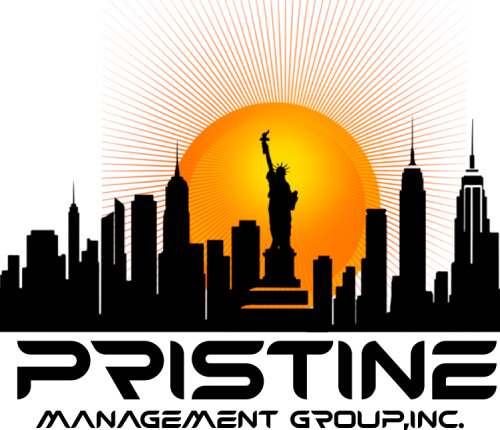Feedback is an essential ingredient for effective leadership, acting as a mirror that reflects both strengths and areas for growth. Leaders who actively seek and apply constructive feedback not only sharpen their decision-making skills but also inspire trust and collaboration among their teams. In today’s dynamic work environment, understanding how to improve leadership skills through feedback can make the difference between stagnant leadership and continuous growth.
Constructive feedback is more than just a performance review tool—it is a pathway to enhanced self-awareness, continuous learning, and impactful decision-making. By embracing feedback, leaders can create a culture of transparency and mutual respect that drives both personal and organizational success.
Understanding the Power of Feedback
Feedback is the cornerstone of leadership development, offering leaders a clear view of their impact on others and highlighting opportunities for growth. It serves as a catalyst for change by revealing blind spots, affirming effective practices, and inspiring new approaches to challenges.
Feedback as a Catalyst for Growth
- Accelerating Leadership Development: Feedback provides concrete examples of behaviors and outcomes, allowing leaders to identify strengths and pinpoint areas needing improvement. This process accelerates personal growth, as leaders can quickly adjust their strategies to better serve their teams and organizations.
- Enhancing Performance: Constructive feedback helps in refining skills by offering specific, actionable insights that support continuous improvement. Leaders who integrate these insights are often better prepared to navigate complex challenges and achieve superior results.
- Promoting Accountability: Receiving feedback encourages leaders to take responsibility for their actions and decisions. This accountability not only builds credibility but also sets a positive example for team members, reinforcing a culture of ownership.
Building Self-Awareness Through Feedback
- Clarifying Personal Strengths and Weaknesses: Honest feedback helps leaders see themselves through the eyes of others, highlighting areas of excellence and identifying gaps that might be invisible from their perspective. With this enhanced self-awareness, leaders can tailor their development efforts more effectively.
- Fostering Emotional Intelligence: Feedback encourages leaders to recognize and understand their emotional responses, leading to better regulation and communication. Improved emotional intelligence translates into stronger relationships with team members and a more empathetic leadership style.
- Encouraging Reflective Practice: Regularly reflecting on feedback nurtures a habit of self-examination that can lead to more thoughtful decision-making. This reflective practice allows leaders to adjust their behaviors proactively and stay aligned with their values and goals.
Strategies for Receiving and Applying Feedback
Successful leaders view feedback as a gift, using it to refine their strategies and bolster their leadership skills. Adopting a systematic approach to receiving and applying feedback is key to unlocking continuous improvement and fostering a growth-oriented mindset.
Embrace a Growth Mindset
- Open to Learning: A growth mindset involves believing that skills and abilities can be developed through dedication and hard work. Leaders with this perspective recognize that embracing feedback is a key part of how to be a good team leader, allowing them to grow, adapt, and inspire their teams effectively.
- Resilience in the Face of Criticism: Embracing challenges and learning from mistakes makes it easier to incorporate feedback constructively. This resilience is essential for navigating the inevitable setbacks that come with leadership.
- Focus on Improvement: Instead of dwelling on negatives, leaders with a growth mindset focus on actionable steps to improve. This focus turns criticism into a roadmap for success, guiding future decisions and strategies.
Seek Feedback Proactively
- Initiate Regular Check-Ins: Leaders should create routine opportunities for team members and peers to share their thoughts on performance. Proactive check-ins ensure that feedback is timely and relevant, fostering a culture of continuous dialogue.
- Utilize Multiple Sources: Gathering feedback from diverse perspectives, such as direct reports, peers, and mentors, provides a well-rounded view. This multi-faceted approach helps identify common themes and unique insights that might otherwise be overlooked.
- Encourage Honest Dialogue: A transparent atmosphere where employees feel safe to provide honest feedback is crucial. Leaders can foster this environment by demonstrating genuine interest and openness in every interaction.
Listen Actively and Ask Clarifying Questions
- Practice Active Listening: Active listening involves giving full attention to the speaker, understanding their message, and responding thoughtfully. This practice ensures that leaders grasp the full context of the feedback without misinterpretation.
- Clarify to Gain Deeper Insights: Asking clarifying questions helps uncover the nuances behind the feedback, revealing underlying issues and opportunities. These questions can transform vague observations into actionable insights.
- Validate the Feedback: Acknowledging the feedback with sincere thanks validates the speaker’s effort and encourages future contributions. This validation creates a safe space for open communication and continuous improvement.
Reflect and Integrate Feedback
- Self-Reflection for Continuous Improvement: Leaders should dedicate time to reflect on the feedback and evaluate how it aligns with their personal and professional goals. This reflective process is crucial for transforming feedback into meaningful action.
- Develop Action Plans: Creating a structured plan based on feedback helps in systematically addressing areas of improvement. Action plans serve as blueprints for change, outlining clear, measurable steps toward growth.
- Monitor Progress: Regularly reviewing progress ensures that the steps taken are effective and adjustments can be made as needed. Continuous monitoring reinforces a commitment to development and maintains momentum in leadership evolution.
Creating a Feedback-Driven Culture
A feedback-driven culture is one where open communication and constructive criticism are not only welcomed but actively encouraged. Leaders who build such environments foster innovation, trust, and high performance throughout their organizations.
Establish Trust and Open Communication
- Build Mutual Respect: Trust is the foundation of effective feedback. Leaders can build mutual respect by consistently demonstrating integrity and transparency. When team members feel respected, they are more likely to provide honest and constructive feedback.
- Encourage Open Dialogue: Create forums and regular meetings where feedback is an expected part of the conversation. Open dialogue reduces the fear of criticism and promotes a shared vision for growth.
- Maintain Confidentiality When Necessary: Respecting the privacy of feedback, especially when sensitive, fosters an environment where people feel safe to speak their minds. This approach builds confidence and encourages ongoing participation.
Lead by Example in Accepting Feedback
- Model Receptivity: Leaders who openly receive and act on feedback set a powerful example for their teams. By modeling vulnerability and a commitment to improvement, leaders inspire others to follow suit, demonstrating how to improve leadership skills through continuous learning and adaptability.
- Share Personal Experiences: Discussing personal challenges and lessons learned from feedback can demystify the process. Sharing experiences creates relatability and encourages team members to embrace feedback without hesitation.
- Celebrate Improvements: Recognize and celebrate the positive changes that result from feedback. Acknowledging progress reinforces the value of feedback and motivates continued participation.
Establish Regular Feedback Mechanisms
- Schedule Routine Evaluations: Implement regular feedback sessions, such as monthly or quarterly reviews, to maintain momentum. Consistent evaluations ensure that feedback remains an integral part of the leadership process.
- Utilize Anonymous Surveys: Anonymous feedback tools can provide candid insights that might not surface in face-to-face meetings. This approach ensures that all voices are heard, fostering a more inclusive culture.
- Implement 360-Degree Feedback: A comprehensive 360-degree feedback system gathers input from all levels of the organization, offering a well-rounded perspective. This method ensures that feedback is balanced and covers various dimensions of leadership performance.
Foster a Safe Environment for Constructive Criticism
- Encourage Constructive Language: Set clear guidelines that ensure feedback is specific, respectful, and geared toward improvement. This clarity helps in framing criticism as a tool for growth rather than a personal attack.
- Address Resistance Promptly: Leaders should be prepared to address any resistance or misunderstandings regarding feedback openly and empathetically. Proactive resolution of conflicts helps maintain a positive and productive feedback environment.
- Provide Training on Giving Feedback: Equip team members with the skills needed to provide effective and respectful feedback through regular training sessions. Well-trained employees are more likely to contribute constructively, enhancing the overall quality of feedback, which is why companies with leadership training programs prioritize continuous development in communication and team dynamics.
Leveraging Feedback for Effective Decision-Making and Adaptive Leadership
Effective decision-making is at the heart of adaptive leadership, and feedback plays a crucial role in refining this process. Leaders who integrate feedback into their decision-making framework are better positioned to respond to challenges and seize opportunities.
Analyze Patterns in Feedback
- Identify Recurring Themes: By reviewing feedback over time, leaders can identify recurring themes that signal underlying issues or strengths. Recognizing these patterns allows for more informed and strategic decisions.
- Differentiate Between Isolated and Systemic Issues: It is important to distinguish between one-off comments and consistent feedback trends. This differentiation helps in addressing issues that are truly significant to long-term success.
- Utilize Data-Driven Insights: Leveraging quantitative data alongside qualitative feedback can provide a more comprehensive view of performance. Data-driven insights support more objective and effective decision-making.
Prioritize Actionable Insights
- Focus on High-Impact Areas: Not all feedback will be equally actionable; prioritize insights that have the potential to drive the greatest improvement. This targeted approach ensures that efforts are concentrated where they matter most.
- Set Clear Objectives: Transforming feedback into clear, measurable objectives is essential for progress. Establishing priorities based on actionable insights creates a roadmap for meaningful change.
- Allocate Resources Effectively: Use feedback to inform resource allocation, ensuring that time and investments are directed toward the most promising opportunities. This methodical approach minimizes waste and maximizes returns on developmental efforts.
Integrate Feedback into Strategic Planning
- Align Feedback with Organizational Goals: Incorporate insights from feedback into the strategic planning process to ensure that leadership decisions support broader business objectives. When feedback aligns with the organizational vision, it reinforces a unified direction for growth.
- Create Iterative Improvement Cycles: Establish cycles where feedback informs planning and outcomes from implemented changes and generates new insights. This iterative process encourages ongoing refinement and adaptability in leadership practices.
- Engage Stakeholders in Decision-Making: Involving team members in the feedback and decision-making process fosters a sense of ownership and collective responsibility. Inclusive decision-making enhances the overall quality and acceptance of leadership decisions.
Use Feedback to Navigate Change and Uncertainty
- Anticipate Emerging Trends: Feedback often reveals early signals of change that can be leveraged to stay ahead of industry shifts. Leaders who monitor these signals are better prepared to adapt strategies and maintain a competitive edge.
- Enhance Agility in Leadership: An agile leadership style is built on the ability to pivot quickly based on new information. Regular feedback ensures that leaders remain responsive and proactive during times of uncertainty.
- Empower Teams to Innovate: Encouraging feedback-driven innovation creates a workplace where continuous improvement is the norm. Empowered teams are more likely to propose creative solutions, driving collective success.
From Feedback to Fearless Leadership
Embracing feedback is not merely about improving performance—it is a transformative process that builds self-awareness, drives continuous learning, and fosters adaptive decision-making. Leaders who commit to this journey can inspire their teams, cultivate a culture of open communication, and navigate the complexities of modern business with confidence.Ready to transform your leadership style?
At Pristine Management Group, we specialize in guiding leaders through the feedback-driven journey to achieve excellence. Connect with us today to explore how our tailored strategies and expert coaching can empower you to harness the full potential of constructive feedback, drive growth, and elevate your impact in the ever-evolving business landscape.


